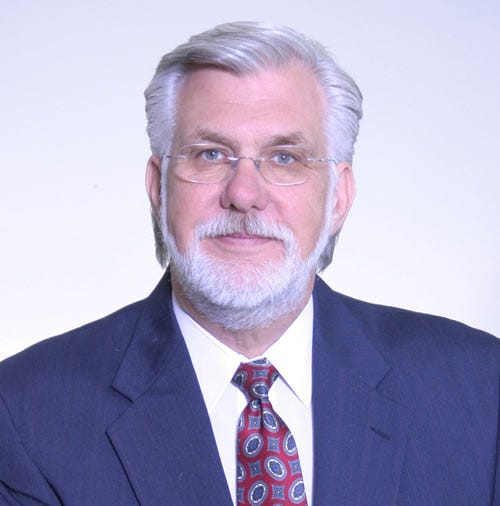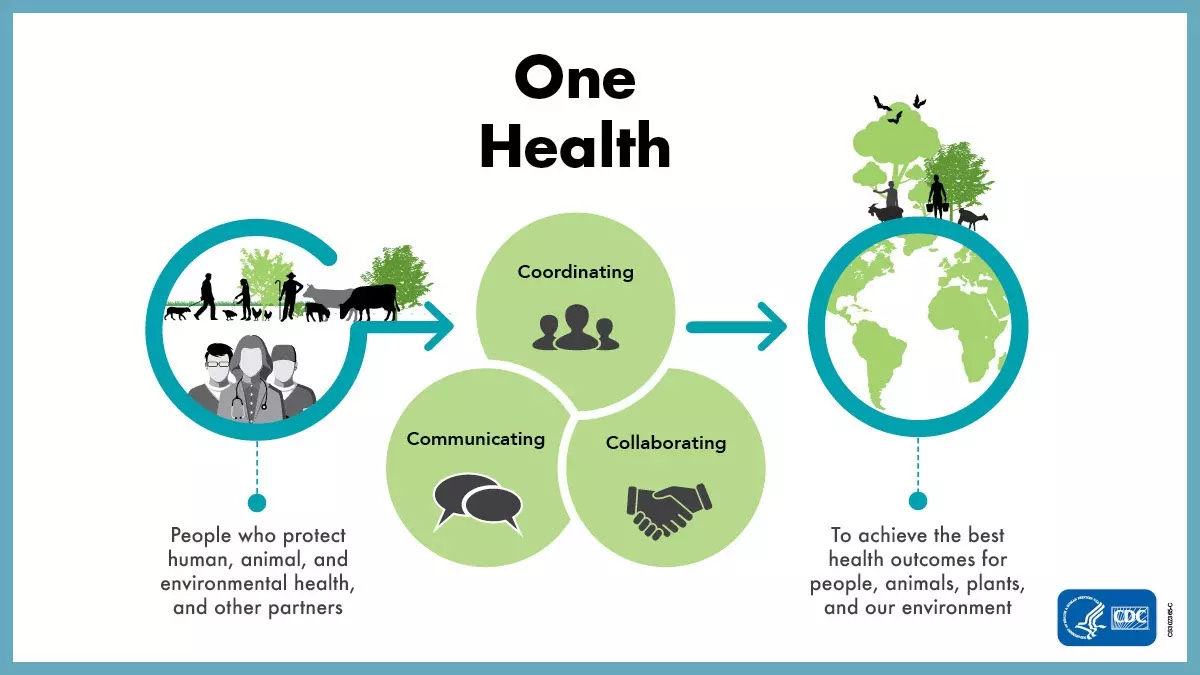Patrick Wood explains how One Health includes everything, and that it is already embedded in our domestic agencies
It needs to be uprooted. The rejecting of the WHO's plans (which includes One Health) is the first step.
WHO Needs A Treaty? "One Health" Is Already Firmly Established In America
May 08, 2024
While the World Health Organization has been gaslighting the world about the need for a global “Pandemic Agreement,” the Feds had already rolled out the infrastructure to support it when nobody was watching.
While the United Nations and its WHO should be kicked out of New York into the Atlantic Ocean, the real problem is our own government, which has been front-running the whole operation for years.
It’s called “One Health.”
Initially conceived by the World Wildlife Conversation Association in 2004, the One Health Commission (see below) was funded by the Rockefeller Foundation in 2009 with the objective of spreading the concept widely. It worked.
The NIH (National Institute for Health) got on board in a 2013 study, Toward Proof of Concept of a One Health Approach to Disease Prediction and Control, where they considered “the role of changing environments with regard to infectious and chronic disease risks affecting humans and nonhuman animals” and “disease prediction and control.” Then…
They found evidence to support each of these concepts but also identified the need for greater incorporation of environmental and ecosystem factors into disease assessments and interventions.
In 2023, not surprisingly, the CDC and the HHS (Department of Health and Human Services) conducted a study: National One Health Framework To Address Zoonotic Diseases and Advance Public Health Preparedness in the United States: A Framework for One Health Coordination and Collaboration Across Federal Agencies.”
So, off to the races they went. spreading the contagion (as a bonafide fact, not!) throughout several government agencies.
The Scope of One Health
The One Health Commission is a 501(c)(3) non-profit funded by other non-profits, including the Rockefeller Foundation.
According to the Commission’s website, here are all of the areas wrapped into One Health:
Agricultural production and land use
Animals as Sentinels for Environmental agent and contaminants detection and response
Antimicrobial resistance mitigation
Biodiversity / Conservation Medicine
Climate change and impacts of climate on health of animals, ecosystems, and humans
Clinical medicine needs for interrelationship between the health professions
Communications and outreach
Comparative Medicine: commonality of diseases among people and animals such as cancer, obesity, and diabetes
Disaster preparedness and response
Disease surveillance, prevention and response, both infectious (zoonotic) and chronic / non-communicable diseases
Economics / Complex Systems, Civil Society
Environmental Health
Food Safety and Security
Global trade, commerce and security
Human - Animal bond
Natural Resources Conservation
Occupational Health Risks
Plant / Soil health
Professional education and training of the Next Generation of One Health professionals
Public policy and regulation
Research, both basic and translational
Vector-Borne Diseases
Water Safety and Security
Welfare / Well-being of animals, humans, ecosystems and planet
Basically, One Health intends to control all facets of life: Economics, water, public policy, occupational health risks, agriculture, global trade, commerce, environmental health, ecosystems, communications, climate change and incidentally, pandemics and human health.
Can you see the plan here? This encompasses 100% of living and inorganic material on the face of the planet.
Whole-of-Government Approach
The CDC has a whole website devoted to it:
One Health is a collaborative, multisectoral, and transdisciplinary approach — working at the local, regional, national, and global levels — with the goal of achieving optimal health outcomes recognizing the interconnection between people, animals, plants, and their shared environment.
One Health is an approach that recognizes that the health of people is closely connected to the health of animals and our shared environment. One Health is not new, but it has become more important in recent years. This is because many factors have changed interactions between people, animals, plants, and our environment.
What are the “many factors” that have changed? Obviously, none. But that hasn’t stopped them from linking your health to animals and ecosystems. The rhetoric is insidious:
Successful public health interventions require the cooperation of human, animal, and environmental health partners. Professionals in human health (doctors, nurses, public health practitioners, epidemiologists), animal health (veterinarians, paraprofessionals, agricultural workers), environment (ecologists, wildlife experts), and other areas of expertise need to communicate, collaborate on, and coordinate activities. Other relevant players in a One Health approach could include law enforcement, policymakers, agriculture, communities, and even pet owners. No one person, organization, or sector can address issues at the animal-human-environment interface alone.
You might think the Center for Disease Control has overstepped its boundaries. Now, it is crossing over to law enforcement, veterinarians, ag workers, policymakers, wildlife experts, ecologists, and even pet owners.
The Biden Administration is taking a whole-of-government approach to One-Health.
The USDA, like the CDC, has its own website:
The health of animals, people and the environment is connected. The "One Health" approach is the collaborative effort of the human health, veterinary health and environmental health communities. Through this collaboration, USDA achieves optimal health outcomes for both animals and people.
With its partners such as the U.S. Fish and Wildlife Service, U.S. Food and Drug Administration (FDA), the Centers for Disease Control and Prevention (CDC), the National Institutes of Health (NIH), the Environmental Protection Agency, tribal Nations, USDA seeks to maintain or reduce health risks to animals, humans, the environment and society.
The FDA has its own website:
The One Health Initiative recognizes this inter-connectedness and advocates a comprehensive approach to health and environmental problems versus a piecemeal approach. By building bridges between physicians, veterinarians, environmental scientists, and public health professionals, the initiative aims to “promote, improve, and defend the health and well-being of all species.”
The EPA has its own website:
One Health is a holistic approach to advancing human well-being that recognizes that the health of people is closely connected to the health of animals and our shared environment: when we protect one, we protect all.
U.S. Fish and Wildlife Service hired a “One Health Coordinator.”
Ad infinitum.
Don’t Need A Treaty For This
The United Nations and the World Health Organization came late to the One Health party. Regardless of the bickering among nations, I can guarantee that One Health will remain on the center stage. Let’s look at the April 2024 Proposal for the WHO Pandemic Agreement.
In the Chapter 1, Introduction, Article 1, Use of Terms we read the definition of One Heath used in the document:
“One Health approach” means an integrated, unifying approach that aims to sustainably balance and optimize the health of people, animals and ecosystems. It recognizes that the health of humans, domestic and wild animals, plants and the wider environment (including ecosystems) is closely linked and interdependent.
The meat is seen in Article 5.
Article 5. One Health
1. The Parties commit to promote a One Health approach for pandemic prevention, preparedness and response, recognizing the interconnection between people, animals and the environment, that is coherent, integrated, coordinated and collaborative among all relevant organizations, sectors and actors, taking into account national circumstances.
2. The Parties commit to identify and address the drivers of pandemics and the emergence and re-emergence of disease at the human-animal-environment interface through the introduction and integration of interventions into relevant pandemic prevention, preparedness and response plans.
3. Each Party shall, in accordance with its national context, protect human, animal and plant health, with support from WHO and other relevant international organizations, by:
(a) implementing and regularly reviewing relevant national policies and strategies that reflect a One Health approach as it relates to pandemic prevention, preparedness and response;
(b) promoting the effective and meaningful engagement of communities in the development and implementation of policies, strategies and measures to prevent, detect and respond to outbreaks; and
(c) promoting or establishing One Health joint training and continuing education programmes for human, animal and environmental health workforces, to build relevant and complementary skills, capacities and capabilities.
4. The modalities, terms and conditions, and operational dimensions of a One Health approach shall be further defined in an instrument, that takes into consideration the provisions of the IHR (2005), and is operational by 31 May 2026.
All of the word-salad language in the rest of the Pandemic Agreement is superfluous to the main plan to unify everything to the One Health concept.
But wait, the federal government has already been steeped in One Health for almost 20 years!
While everybody obsesses over the loss of sovereignty, the horse has already left the barn. Instead, we should think about how to rip this stinkweed out of our native soil.







Good stuff to know! I will be teaching my students about this tomorrow -- I teach middle school and high school classes in agriculture, and my kids are being educated about globalist plans for food control!
IT'S HAPPENING: Britain REFUSE to sign WHO pandemic treaty
This is big news for freedom and sovereignty.
https://petersweden.substack.com/p/its-happening-britain-refuse-to-sign